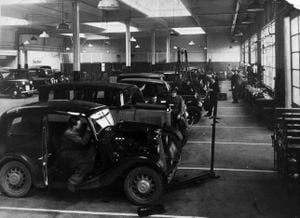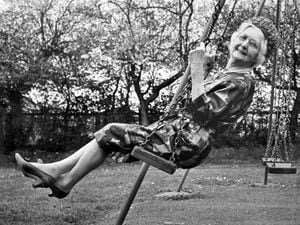Bustling business of a town built on wool
Some of the evocative names of Shrewsbury's industrial past - like Wales & Edwards, Silhouette, and Sentinel - are remembered in a new book exploring the working life of the county town.

And in Shrewsbury At Work, local historian Nigel Hinton also takes a look at some of the firms on the current business scene.
But while today's county town has a diverse range of businesses, Mr Hinton says Shrewsbury grew first as a major wool trading centre, which was later replaced by a trade in woven Welsh cloth.
The town also played its part in the Industrial Revolution when ironmaster William Hazledine created his ironworks in Coleham and made the bridges designed by Thomas Telford.
Among the big employers of the 20th century were Corbett's and the Sentinel Works.
Today, he says, in the public sector, health and education continue to be the largest employers in the town.
Leisure and care have become important sectors, and the internet has increased opportunities for home-based self employment.
"The High Street is under pressure from internet retailers to compete on price, but Shrewsbury still has many successful independent shops offering personal service.
"The Business Improvement District represents 540 members, of which 110 are independent retailers, and there are 83 independent bars, restaurants, coffee shops and hairdressers.
"Some business with smaller premises operate within the loop, including Shrewsbury Market Hall, which has seen an increase in the number of quality dining places and was voted England's most popular market in January 2018.
"Shrewsbury was said to be the graveyard of ambition, but that is another way of saying it has an excellent work-life balance.
"Charles Darwin, born here in 1809, would have approved of many local entrepreneurs who have grasped change, adapted their businesses, and survived."
Wales & Edwards were motor engineers based at Morris House at the bottom of Wyle Cop and post war were notable for developing electric milk floats, which were made at Harlescott.
"A number of the vehicles are still in use in and around Shrewsbury today by various dairy companies," says Mr Hinton.
Silhouette came to Shrewsbury to escape the London Blitz and grew to be one of the town's largest employers, and also opened factories at other Shropshire locations. It also had a thriving social side.
He says the business was taken over in 1979 but within a couple of years it had collapsed and remaining Shropshire factories were closed down. The brand name was sold on and Silhouette corsets are now made in Europe.
One big firm which has been a continuous thread through the county town's industrial history has been Morris Lubricants, which began life at Frankwell in 1869 when James Kent Morris opened a grocery store and wax chandlery. Later the company diversified to supply oil.
Today, says Mr Hinton, it is an international business exporting to over 80 countries around the world and also has a division which enables it to prepare lubricants for specialist requirements in high performance vehicles and heritage transport.
Among other current companies featured in the book is Salop Leisure, which started in the 1960s as a caravan business, and is today based at Emstrey where there is a caravan showroom and service centre, and also a dedicated plant centre, and a restaurant.
Shrewsbury at Work is published by Amberley and costs £14.99.





